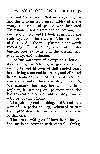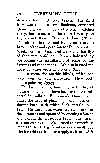TitleChapter III, "Everyman's House" book, by Caroline Bartlett Crane
CreatorCrane, Caroline Bartlett, 1858-1935, author
InstitutionWestern Michigan University
SubjectArchitecture, Domestic
SubjectDwellings
SubjectBetter Homes in America
Item NumberLA03a034
RelationPart of Caroline Bartlett Crane "Everyman's House" Collection
Type
collection, text
Formatjpeg
Description26
CHAPTER III
WHAT IT COST US TO BUILD
HOW much will it cost?' is the crucial question with practically every man and woman planning to build a home. We have more or less definite ideas of what we want if we can afford it. Whether the peak of our hopes be a roof garden or a kitchen entry, the question is the same--Can we afford it? If we are 'comfortably off,' Mother thinks that what she must have is plate-glass windows and an inglenook fireplace and a panelled dining room and a little sun parlour and a back stairs and a built-in ironing board. The Man wants but little here below: a shower bath, a window where he can see to shave, and a place for a work bench. Then the architect suggests a few features: an artistic cornice, an ornamental doorway, a pergola here at the side. He draws a little free-hand sketch. Baby is toddling down that viny pergola.
27
WHAT IT COST US TO BUILD
Perfectly charming! Draw up the plans and specifications!
And then come the contractors' bids. Horrors! This little house will cost us twice as much as we can possibly afford, even if we borrow to the limit! We simply can't build at all! It's perfectly outrageous! Why, Uncle Alfred's house, bigger and better than this, cost only $4,500!
'That was in the spring of 1914,' the architect reminds you. 'One of my very last houses, before the war!' (That horrible war! Its full atrocity comes home to you for the first time!)
Now unless at this point you definitely renounce the idea of building a home, there are just three things to do--not one of three things, but all three:
1. List all the features of your plan which you feel you simply cannot do without, if you are going to build at all. Get down to the irreducible-minimum plan.
2. Go over the remaining features of your original plan and make a list of the features which it would be practical to add to your house after it is wholly or partly paid for.
28
EVERYMAN'S HOUSE
Would the house, with the hoped-for additions, reasonably satisfy your chastened expectations? If so:
3. Ascertain what it will cost to build that irreducible-minimum house now, and whether you can negotiate the necessary building loan on terms which you dare undertake to fulfil.
In case you can't do all three of these things, and still want your home, the obvious plan is to begin at once to save your money until you have accumulated the amount necessary (about one third of the combined cost of house and lot) in order to borrow the remainder.
People who won't condescend to these details are the people who presently come to feel that they have a man-eating white elephant on their hands in place of a home. And wives must be merciful, nor forget that in this instance it is 'the man who pays.'
We could hardly claim that cost was the crucial question in the case of Everyman's House, since, trusting to the good judgment of our committee, the business men of our city had given us carte blanche in the matter of materials and labour. And yet it was crucial, in a way. We must build our Demonstration
29
WHAT IT COST US TO BUILD
Better Home in such a manner and at such a cost as would commend it to 'Better Homes in America' whose Guidebook advised the cities participating in the campaign to keep the cost of the house (exclusive of the building site) down to the neighbourhood of five thousand dollars.
Our first thought was to hold ourselves strictly to a five-thousand-dollar limit, doing the best possible within that sum. But, in that case, what was going to become of our resolve to build conscientiously, with the most suitable materials and the best workmanship, and to embody all practical conveniences and labour-saving devices in our home? This was our golden opportunity to demonstrate these values, as well as money value, in home-building; we simply could not sacrifice it. We finally decided upon the following course:
1. We would build and equip our house around a working mother and her baby, according to our best ideas of what such a house should be and should contain; and we would keep and publish an accurate account of what each of the various items--lumber, cement, brick, plumbing, construction work, etc.--
30
EVERYMAN'S HOUSE
cost at the prevailing local retail prices for these things. This we did, fully and frankly, notwithstanding a promised final discount of 10 per cent.[sic] on materials and fixtures in the waiver signed by the material men. We could not run the risk of misleading any one into an attempt to duplicate our house, or any feature of it, for less than he would actually have to pay.
2. We would keep and publish as accurate an account as possible of the difference in cost between the quality of certain fundamental features in our house, and a quality which would serve the purpose if one were forced to strict economy in building. To give but one example: pine floors instead of oak.
3. We would reckon and publish the cost of features and equipment in our house which a prospective builder could either eliminate from consideration altogether, or else plan to add to his home at a later date. Examples: An extra lavatory-toilet; an automatic water-heater.
Now, let me tell you our pros and cons over, first, the fundamental things in Everyman's House.
31
WHAT IT COST US TO BUILD
I have already mentioned oak floors for pine. The quality and condition of the floors are without doubt the most immediately noticeable feature in a room. Said a man who had been 'batching it' until he had reduced the process to a science: 'I have learned that if the floor is clean and polished, people don't notice other things.'
However, we chose oak, not so much because of its appearance, but because it is so much more serviceable, and, in ten years or so, will have proved itself the cheaper floor. A pine floor, under the feet of children, mars easily--sometimes even splinters--and looks so bad, notwithstanding frequent refinishing, that you find yourself laying rugs to cover as much of it as possible which is quite the reverse of economy. An oak floor is something you never care to hide. Its distinction is enhanced by a sparing use of rugs. Our oak floors were of the very highest quality of straight clear oak. We estimated that to lay and finish these floors in all the rooms and closets, except bathroom, kitchen entry, and upper lavatory, cost $150 more than good pine floors. (In the market at that time we
32
EVERYMAN'S HOUSE
found oak to be as cheap as hard, but much less handsome, maple.)
Of course, a compromise is possible. Oak for lower floor and stairs; pine above stairs; though nothing will suffer more than the floors in the children's rooms. And of course it is possible to lay oak floors, some day, on top of the pine, though the total cost will seem like a great waste of money. If, however, oak is wholly out of the question, for such a house (as in the Southern pine region and in California), matters can be greatly helped by the best quality of workmanship and varnish for a pine floor.
The cost of floors is but one item of our lumber bill that might be reduced for the sake of lowering building costs. Our Chairman of Finance sets the possible deductions in the lumber bill at $568.47. This includes the saving on the substitution of pine floors for oak, already mentioned, and on the following: The use of an ordinary quality of unstained shingles, at a saving of $49.87, for the best stained shingles; of a cheaper, narrow material in place of clear white Pine Bungalow, at a saving of $45 a thousand and the lower cost
33
WHAT IT COST US TO BUILD
of thinner window and door frames than those required by the heavy bungalow type of siding; also the saving on the use of cheaper lumber and finish for fewer cupboards and drawers.
Our house cost more because, as one expert builder said, after going over it critically, 'I find that this is no play-house or make-believe, but an honest-to-goodness effort to build a really model house.'
Next to the large possible saving in lumber came that in plumbing, though the more expensive of these items fall under the head of features that can be omitted at time of building and added afterward at one's convenience. However, the bathtub needs to be mentioned here. One of the most back-breaking of women's household tasks is cleaning under and around and back of the ordinary bathtub. We felt that our built-in, recessed tub, illustrating this great convenience to the housewife, was well worth the extra cost of $45. The other bathroom fixtures, as well as the kitchen sink, of a quality above the ordinary, will, we believe, save many plumber's bills and prevent grief over lustreless faucets
34
EVERYMAN'S HOUSE
and chipped enamel. Here should be mentioned the 'roughing in' of all pipes and traps for the second-story lavatory, and the extra drain for the shower bath. When the family can afford to purchase an extra lavatory or toilet, these fixtures have only to be attached to the pipes already there. The extra cost of the above mentioned features, exclusive of the built-in bathtub, was about $100.
Among other features of house construction which cannot very well be changed after the house is once built comes the basement. Our basement walls, and partitions also, are of concrete blocks. After six months, not one crack has appeared in any of the walls. That is due in part to good workmanship and good construction timber. It is without doubt largely due to the solid basement foundation of the partition walls of the house.
We wanted our basement high enough to give good head room under all furnace pipes. Frankly, I think we got it unnecessarily high, but that is an excellent fault in basements. We estimate that the extra basement height and cement-block partition walls of our base-
35
WHAT IT COST US TO BUILD
ment cost us $100 more than would be required for ordinarily good basement architecture.
The metal clothes chute from second story to cellar cost $21.50. The metal window frames for basement, the metal coal chute, the steel embedded in all exposed corners of plaster, cost us, we estimate, $35 above the ordinary construction.
The plaster in Everyman's House confers beauty because of the simplest fundamentals of good workmanship. A builder of beautiful homes once told me a secret about this source of beauty worth remembering. 'Haven't you gone into rooms,' he said, 'which, in spite of beautiful proportions and appointments, gave you an indefinite sense of something lacking, restless, defeated--a wrong expression on the room's face? And haven't you, on the other hand, gone into rooms which gave you a sense of satisfaction quite aside from anything you could name or describe? If, in this latter kind of room, you were to take a straight-edge and square and lay them here and there against the walls and the angles of that room, you might discover that every right angle is
36
EVERYMAN'S HOUSE
truly right, and every wall is floated up to a true surface. Then, as your eye follows the joining line of plaster with base and jamb and picture moulding, that line is true as a drawn thread. The electric and plumbing fixtures go flat and tight against the wall. That room is ?four-square to every wind that blows.' If you are not in the building business, the chances are that you do not notice these details at all, but only the pleasing general effect. The room has ?line' as the artists say. It has simplicity and candour and self-composure, to a degree. You ?like its expression,' as you do that of some stranger you meet on the street, and for the same undefined but sound reason.' When the rooms of Everyman's House, while still devoid of furniture, looked at me with 'that pleasant expression,' I knew the reason why. Each was an honest room with no peccadillos or irregularities to conceal.
And honest, too, in a rather unusual way. Some beauty may be only skin deep; but not so the beauty of our fine sand-finish plaster. Its tint is a cream that can't be skimmed off; it goes down to the very lath-bones. You
37
WHAT IT COST US TO BUILD
need not fear to scrub that surface, though--and this is to me truly inexplicable--after the many thousands of people who inspected Everyman's House from top to bottom, not one spot of soil could I find, even along the stairway, upon those walls. The extra cost of this dyed-in-the-wool plaster is not worth recording. The same may be said of the tile-finished Keene's cement in the kitchen, kitchen entry, and bathroom.
The hardware trim of Everyman's House--door knobs, escutcheons, hinges and stops, sash locks and lifts--is of dull sanded brass in the living room and bedrooms, and of nickel in bathroom and kitchen. It is of excellent appearance and of durable quality and finish. We estimate that, together with the heat registers, it cost $25 or $30 more than the less tasteful and less durable quality usually selected for small homes.
The painting and finishing, inside and out, were of a superior quality, estimated to cost about $100 above the usual amount for a house of that size.
The electric wiring could have been cheaper had we been content with central lighting.
38
EVERYMAN'S HOUSE
However, we believe that central lighting, along with other of its obvious faults, inevitably concentrates the occupants of a room; whereas one of our aims was toward decentralization, in order that all parts of the room, especially the living room, might be used by a big family. Wall openings for reading lamps are a part of this scheme. They also serve for the convenient attachment of electrical appliances. There are two wall-switch ceiling lights in the kitchen instead of the one central light which makes a housewife work always in her own shadow. There is a wall plug for an electric iron or other device. The kitchen entry has its separate light. Every part of the basement is well lighted, and there are wall connections for electric iron and electric washer. The two attractive lanterns on the stoop, like the brass knocker, we confess, are pure luxury. The three pieces cost $21. A wall plug for a reading lamp at the head of the parents' bed is surely a luxury that hard-working people deserve. There are special connections for study lamps in the children's rooms. Our wiring bill might have
39
WHAT IT COST US TO BUILD
been cut some $40 by central lighting and other questionable economies.
Our fireplace of brick might have been eliminated at a saving of some $200. However, as we would almost as soon have left off the roof, we did not list this among possible excisions.
The cuts in cost cited above are on elements of the house so fundamental that they would hardly be omitted wholly from any house at the time of building. No strict line can be drawn here. Of course, the fireplace, complete, and most plumbing and electric fixtures could be postponed to a later date, provided they were planned for at the time of building.
Now we come to consider the items of Everyman's House which could easily be postponed, and thus eliminated from the original cost of building. I shall first mention items not usually included at all in building costs. However, we had to incur these expenses in order to be fitted for Demonstration Week. One was our landscaping--an item of $190.55. Another was the best quality win-
40
EVERYMAN'S HOUSE
dow shades, which cost $33.02. The third item was the best cork linoleum, cemented above felt, on the floors of kitchen, kitchen entry, bathroom, and the toilet-lavatory on the second floor. This cost, laid, $71.93. The electric fixtures and bulbs, necessary to have in place and operation for Demonstration Week, cost just $100; and we count that $50 of that sum could have been eliminated by postponing the installation of some of the fixtures and connections. We also insured the house for three years at a cost of $21.
Then come the outside blinds, which one could omit or add afterward. They cost, before painting, $33.75.
The largest items, however, in the list of features which could have been entirely elimi-nated in building Everyman's House came under the head of plumbing. Our basement shower bath, with white duck curtain, cost $35. The automatic water-heater, located in the basement and operated by opening a faucet anywhere in the house, cost $115. The water-softener cost $210. We deemed this especially important for a large family under a small roof which could not begin to supply a cistern with
41
WHAT IT COST US TO BUILD
the soft water needed for laundry and bathing purposes. We did not want that beauteous built-in bath to be a mere Saturday night affair!
Set tubs in the laundry, which were deemed to be an immediate necessity, were not counted among possible deductions from the plan.
On leaving the subject of possible future additions to the comfort or beauty of a home, I will say that some people have a pleasant custom of giving birthday and Christmas presents to their home. That knocker and those lanterns on the stoop would be lovely presents to almost any little house, unless a water-heater or a basement shower were more in the real line of the family need.
The final revised report of our Chairman of Finance showed that our house, exclusive of the lot, actually cost us $7,249.51, [footnote 1] and that by the deduction allowances cited, or referred to, above, the cost could have been brought down to $5,434.51.
[footnote 1] This does not include architect's fees. The designer has given the plans to 'Better Homes in America.' Blue-prints may be obtained at a nomina[l] price.
42
EVERYMAN'S HOUSE
It is fair to consider that, from the time excavation was completed, this house was built and equipped in less than seven weeks; also, that, near the last, we paid extra for overtime work and night work. We had no time to be economical, with that Fixed Date ever staring us out of countenance. We felt like the combined army and navy in the spring of 1917. Also, one is to keep in mind that the actual cost of the house included not only the best in workmanship and material, but also many features not usually provided with a new-built house. For example, landscaping, sodding, and planting grounds; cement walks to both doors; water, sewer, and gas connection; window shades throughout; best cork linoleum on kitchen, entry, and bathroom floors; even the mail box at the door; in fact, the house complete, ready to move in, and insured for three years.
I believe, and so does the Chairman of Finance, that, if one had the usual four or six months in which to build, and were willing to make most of the deductions and excisions detailed in this chapter, he could duplicate
43
WHAT IT COST US TO BUILD
Everyman's House in Kalamazoo and most other parts of the country for $5,000.
And a closing word about being forced to leave out things we want. It is curiously hard to renounce perfection in a house we are about to build, even though we put up comfortably enough with recognized defects in our own persons and character. Yet we must begin by recognizing the fact that it is not always possible for people to embody the most suitable materials and the best workmanship in creating a house, any more than in creating a costume--or a physique--or a character. We have to work with what we have to work with. Compromises, painful sacrifices, even, may have to be made in order to build a home at all.
And the greater the number of holes that have to be punched in our enthusiastic scheme, the more imperative it is that we 'punch with care,' to preserve the ground work of our plan, together with the roots of the future buried in it. And then our little house--sunned by pros-perity and watered by patience and economy--may sometime grow and blossom into a truly better home for better folks.





































